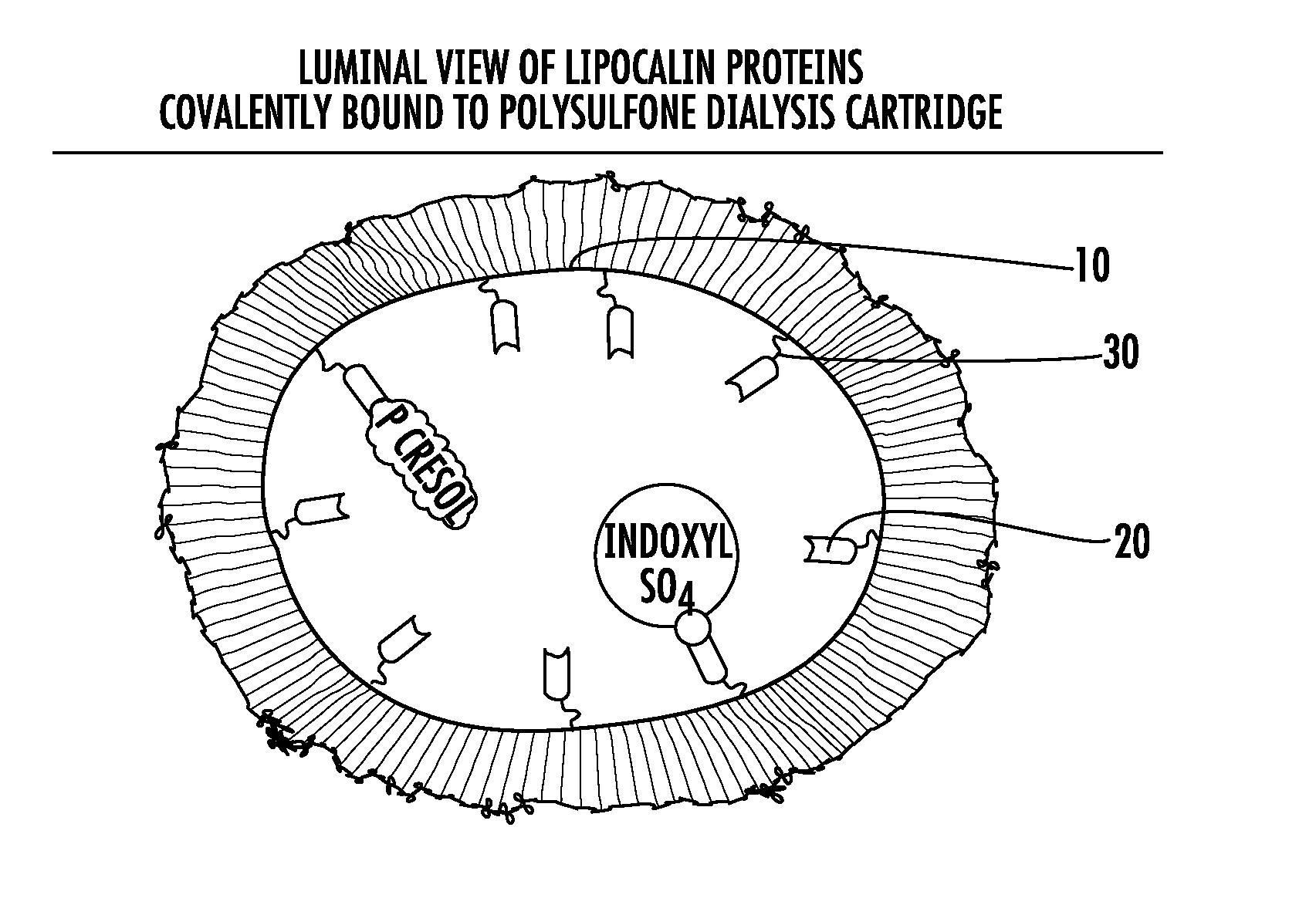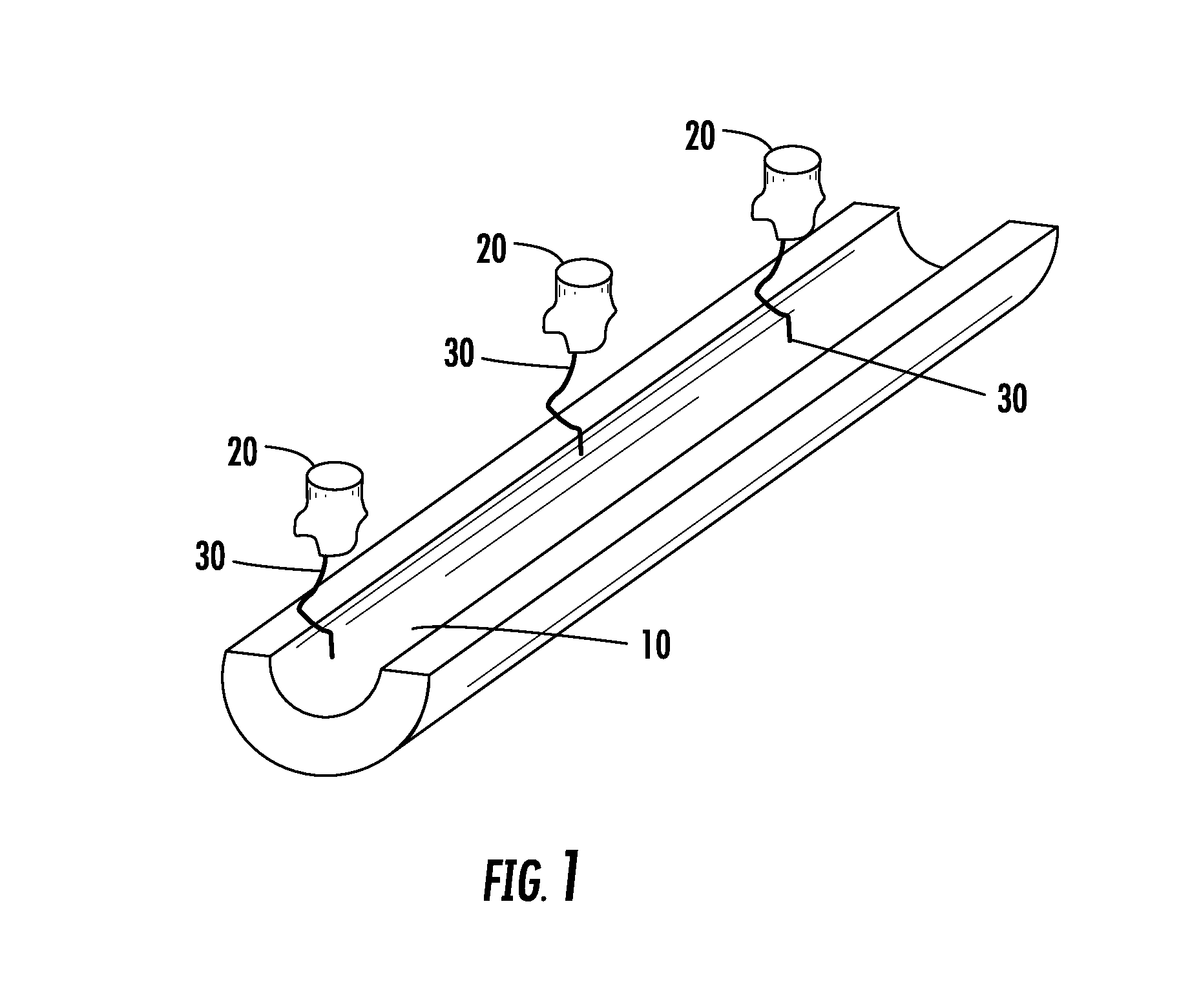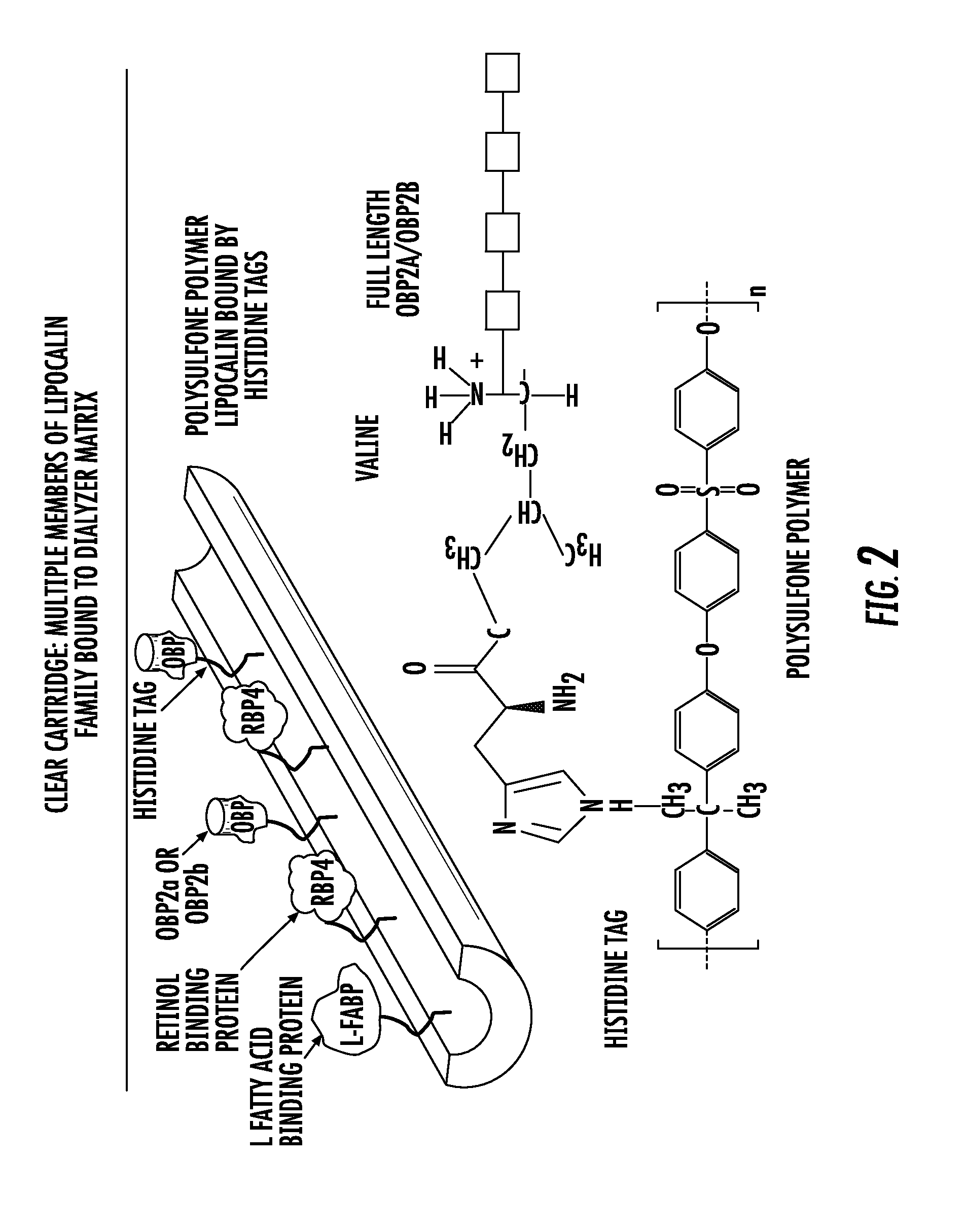Methods and apparatus for kidney dialysis and extracorporeal detoxification
a dialysis and extracorporeal technology, applied in the field of methods and dialysis apparatuses, can solve the problems of deterioration of body tissues and organ systems, dialysis is very ineffective in treating symptoms that arise from hydrophobic, protein-bound uremic toxins, and exhibits limited clearance of non-polar, hydrophobic, or protein-bound toxins
- Summary
- Abstract
- Description
- Claims
- Application Information
AI Technical Summary
Benefits of technology
Problems solved by technology
Method used
Image
Examples
examples
Prophetic Experiments Confirming Efficacy of Lipocalin Modified Dialysis Cartridges
[0065]Experiment 1: Initial experiments will establish the concentrations of P-cresol and where the fluorescence is linear and use this concentration range for the following prophetic experiments. Our initial experiments will be determine the binding affinity, dissociation constants (Kd) and molar stoichiometry of olfactory binding protein OBP-2a and OBP-2b and retinal binding protein-RBP-4 and other lipocalin molecules to free p-cresol, indoxyl sulfate, and other non-polar protein bound uremic toxins. The following table lists, but is not limited to uremic and protein bound toxins that will be studied.
TABLE 1Uremic and protein bound toxinsSoluteGroupCNCUCMax2-methoxyresorcinolphenols—19.6 ± 81.2322.03-deoxyglucosoneAGE0.3 ± 0.11.7 ± 1.03.5CMPF7.7 ± 3.361.0 ± 16.594.0fructoselysineAGE—58.1 ± 10.879.7glyoxalAGE67.0 ± 20.0221.0 ± 28.0 277.0hippuric acidhippurates247.0 ± 112.0471.0hydroquinonephenols8.1 ...
example 2
[0072]The above experiments will be extended to establish the ability of OBP2a, OBP2b and RBP-4 and other lipocalins to remove p-cresol and other protein bound uremic toxins from albumin and other proteins in human serum. Increasing concentrations of p-cresol will be incubated with a physiologic concentration of human albumin (4.0 gm / dl) and then subjected to affinity chromatography as outlined in steps 1-4. The column eluents, which will contain a mixture of free and bound p-cresol, will be separated using U-HPLC and the concentration of p-cresol that did not bind to the lipocalin column determined. These experiments will be repeated using human serum and human albumin.
example 3
[0073]Tertiary experiments will extend the observations of Steps 1-5 and examine the role of pH on the binding affinity of OBPs and other lipocalins for p-cresol and indoxyl sulfate. The rationale is that the high pH of bicarbonate dialysate could potentially alter the binding affinity of dialyzer bound lipocalins for p-cresol and other protein bound uremic toxins. These experiments will determine whether lipocalin modification of existing polysulfone dialyzers could lead to the creation of a single dialysis cartridge capable of simultaneously clearing both water soluble and water-insoluble uremic toxins.
[0074]Methods: These experiments will be conducted in a manner similar to Experiment 1 and 2. In brief, the role of changing pH on the level of p-cresol fluorescence that arises from binding to lipocalin proteins will be examined. These experiments will be extended to include normal and human serum from patients with pre-dialysis CKD and stable ESRD patients. In each of these latter...
PUM
| Property | Measurement | Unit |
|---|---|---|
| pH | aaaaa | aaaaa |
| volume | aaaaa | aaaaa |
| volume | aaaaa | aaaaa |
Abstract
Description
Claims
Application Information
 Login to View More
Login to View More - R&D
- Intellectual Property
- Life Sciences
- Materials
- Tech Scout
- Unparalleled Data Quality
- Higher Quality Content
- 60% Fewer Hallucinations
Browse by: Latest US Patents, China's latest patents, Technical Efficacy Thesaurus, Application Domain, Technology Topic, Popular Technical Reports.
© 2025 PatSnap. All rights reserved.Legal|Privacy policy|Modern Slavery Act Transparency Statement|Sitemap|About US| Contact US: help@patsnap.com



